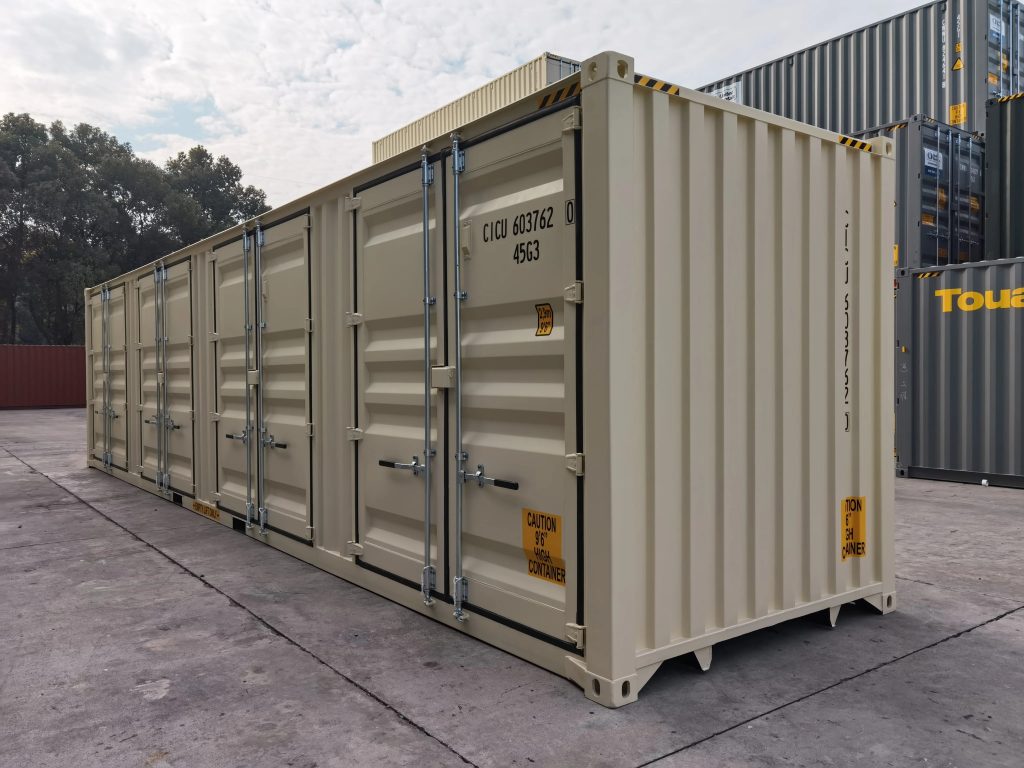14 Common Misconceptions About Shipping Containers

Exploring High Cube Shipping Containers: A Comprehensive Guide
Shipping containers have changed the transportation and storage markets by offering a durable, spacious, and cost-efficient solution for moving items worldwide. Among the different types of shipping containers, high cube containers stand apart due to their increased height, providing more storage capability. This blog post explores the specifics of high cube shipping containers, describing their advantages, specs, utilizes, and more.
What is a High Cube Shipping Container?
High cube shipping containers resemble basic shipping containers however are 1 foot taller. Generally, Shipping Container Architecture added height makes them an exceptional option for transferring bulky items or maximizing storage space. While standard shipping containers generally determine 8 feet high, high cube containers step 9.5 feet high.
Requirements of High Cube Containers
To better comprehend the dimensions and capabilities of high cube shipping containers, let's take a look at a comparison table.
| Container Type | Length (feet) | Width (ft) | Height (ft) | Interior Volume (cubic ft) | Payload Capacity (lbs) |
|---|---|---|---|---|---|
| Standard 20' Container | 20 | 8 | 8.5 | 1,169 | 52,910 |
| High Cube 20' Container | 20 | 8 | 9.5 | 1,308 | 52,910 |
| Requirement 40' Container | 40 | 8 | 8.5 | 2,387 | 61,000 |
| High Cube 40' Container | 40 | 8 | 9.5 | 2,694 | 61,000 |
Table 1: Specifications of Standard vs. High Cube Shipping Containers
Key Features of High Cube Shipping Containers
- Increased Height: As pointed out earlier, the additional height supplies extra space for taller products or more volume in general.
- Durability: Made of heavy-duty steel, these containers are developed to endure extreme ecological conditions.
- Versatility: High cube containers can be used for storage, shipping, and even converted into living or business areas.
- Security: They offer robust security functions to keep contents safe from theft and damage.
- Portability: Like standard containers, high cubes can be easily transferred via truck, rail, or ship.
Applications of High Cube Shipping Containers
High cube containers are utilized across various industries for different functions, consisting of:
- Shipping and Logistics: Perfect for transferring oversized and light-weight items, such as bed mattress, home appliances, and fabrics.
- Storage Solutions: Frequently used for temporary or long-term storage due to their spacious interiors.
- Modular Housing: Increasingly popular for building little homes, offices, and even pop-up stores.
- Mobile Offices: Converted into on-site offices for construction projects or remote workstations.
Advantages of Using High Cube Containers
High cube shipping containers come with a number of benefits:
- Cost-Effective: Offering more space at a similar price, high cubes supply better value for cash.
- Efficient Space Utilization: The additional height permits more products to be loaded without the need for stacking or stuffing.
- Versatility: Their versatility makes them suitable for many applications, from shipping to storage to conversion.
- Boosted Accessibility: The additional height makes it much easier to store items vertically, minimizing the footprint of goods.
- Future-proofing: As markets evolve and demand for larger deliveries increase, high cube containers offer an option that can grow with those needs.
High Cube Container FAQs
1. What are the primary distinctions in between standard and high cube shipping containers?
The primary difference in between basic and high cube containers is height. High cube containers are an extra foot taller than basic containers, supplying more interior volume.
2. Can high cube containers be stacked?
Yes, high cube containers can be stacked much like standard containers. They are developed for stacking during shipping and storage, which makes the most of area utilization.
3. What kinds of goods are suitable for high cube containers?
High cube containers are ideal for transferring bulky items, such as furniture, machinery, or large amounts of lightweight products like textiles. They are also ideal for items that require vertical storage.
4. Are high cube containers weather-resistant?
Yes, high cube containers are made from durable steel with protective finishings to stand up to severe climate condition. Nevertheless, suitable ventilation is important to prevent moisture accumulation inside when used for long-term storage.
5. What is the typical cost of a high cube shipping container?
The cost of a high cube shipping container can differ significantly based on condition and location, but normally varies from ₤ 2,500 to ₤ 5,000.
High cube shipping containers are a flexible and valuable property in the shipping and logistics market. Their increased height permits much better usage of area, making them an ideal choice for transferring extra-large items or maximizing storage solutions. With their robust construction and versatility, high cubes are also gaining popularity in urban advancement and housing solutions. Understanding the benefits and applications of high cube containers enables services and individuals alike to make informed choices that satisfy their requirements.
For business seeking to enhance their shipping and storage strategies, purchasing high cube shipping containers can supply substantial benefits and included value. Whether you are shipping products throughout oceans or seeking a protected and spacious storage service, high cube containers stand all set to serve your needs efficiently.

